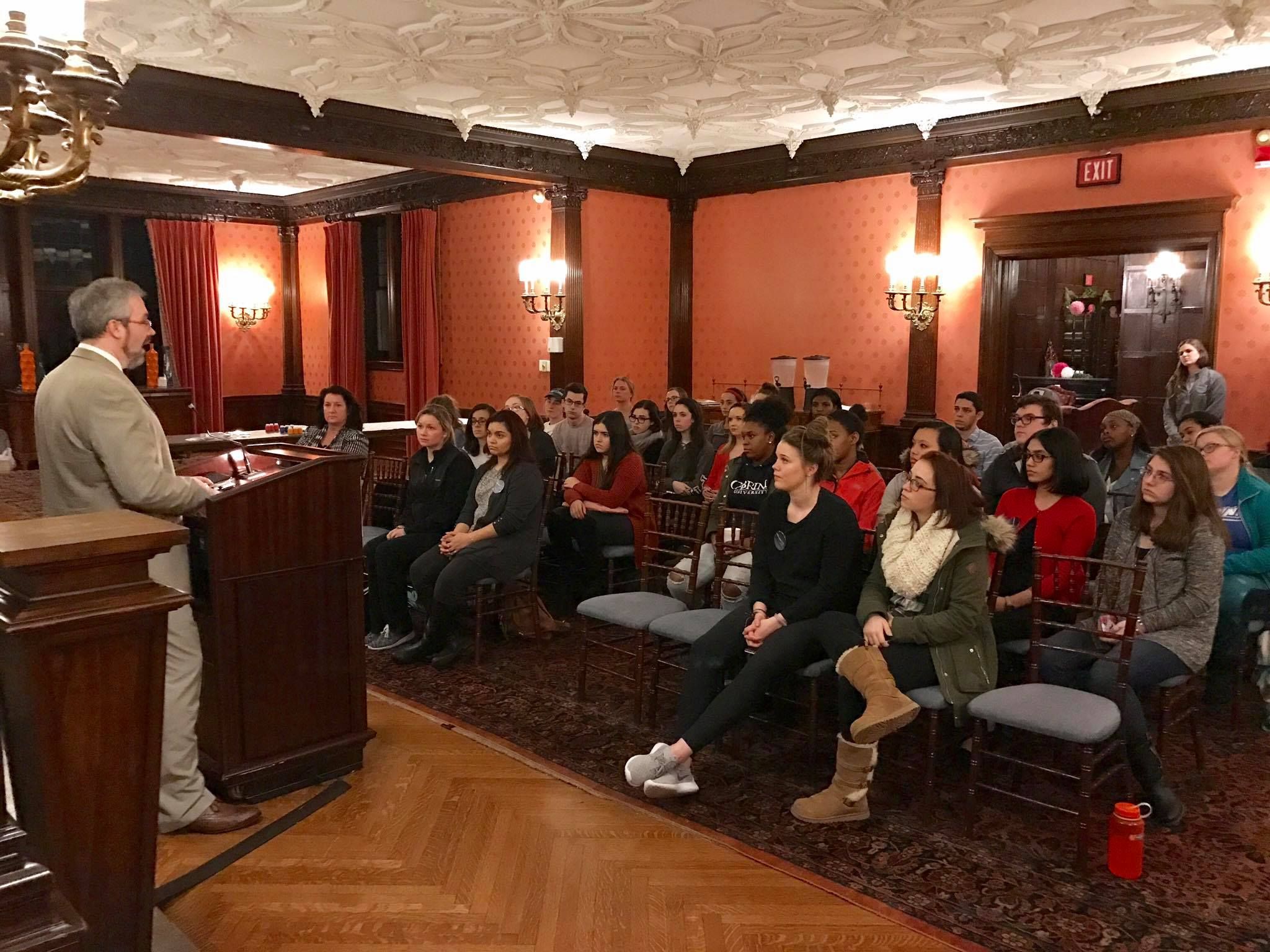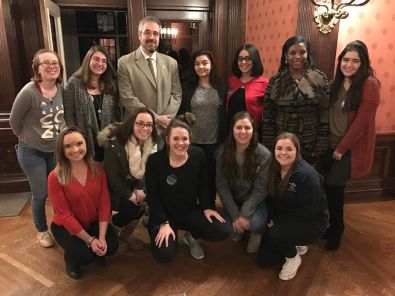Human trafficking is a serious issue that has gone under the radar for years. In addition, human trafficking amongst children has become a larger epidemic that has been occurring all around the world.

These facts were addressed by Hugh Organ, the assistant executive director at Covenant House, Pennsylvania, at a conference with Cabrini University’s Catholic Relief Service Ambassadors. Organ went into deeper detail about how the epidemic of human trafficking is generally overlooked by today’s society, despite being a large global crisis that deserves mainstream attention.
“In the 16 years of working at Covenant House, I have encountered countless numbers of trafficked youth,” Organ said, “and of those children, almost all of them were runaways at some point.”
Organ explained his individual connections with some of these trafficked victims, including the abuse, both physical and sexual, that they received. He included that most human traffickers target vulnerable children who may not have the best lives at home and “sell them their love.”
“That’s how they rope these kids in,” Organ said. “If you don’t have a supportive loving family to back you up, you’re likely to fail into their traps.”
The anti-human trafficking event was held in the Mansion on Wednesday, Feb. 8, at 7 p.m. Approximately 40 were in attendance. The event was held on the day commemorating the Catholic saint, Josephine Bakhita, who had been a slave for a number of years in Sudan and elsewhere.
In addition to educating Cabrini’s students about human trafficking, it was also a very interactive event for Catholic Relief Services Ambassadors to get involved with.
Danielle Perez, who has been a part of Catholic Relief Services Ambassadors since her freshman year at Cabrini, felt that she learned more from the conference than she ever had. “Before the conference, I had more of a basic understanding of human trafficking,” Perez said, “but now I feel as though I learned more in terms of how to identify not only what a victim looks like, but also how to sympathize with what they are experiencing.”

Perez also noted that Organ emphasized how almost anyone could be victim of trafficking and the warning signs for those who may be bystanders to a victim.
“The first thing I think of when I think of trafficking are my nieces,” Perez said. “After being educated and informed on what it is and who can fall victim to it, I realize that it could happen to the people I care about most and the idea of that scares me.”
Junior Alex Ramos, who recently joined Catholic Relief Services Ambassadors, also attended the event. “I think the event made human trafficking seem more real, as the stories and statistics mentioned showed that this was clearly a worldwide epidemic and not just something happening in third world countries.”
Ramos admits that she had no idea what human trafficking was before she recently joined CRS.
“It’s embarrassing to say, but I had no idea something so horrible was going on,” Ramos said. “Making people aware of it using real life stories and having people who may look completely okay on the outside, could very possibly be a victim of trafficking.”
Cali-Ani Diaz, the president of Pura Vida at Cabrini, helped run the event. “Being president of Pura Vida and being aware of this social justice issue, I have thought about every individual women, girl, boy and men who are being trafficked,” Diaz said.
Students who attended the event were also called to dip their hand in paint and place it on a banner to show awareness for human trafficking.
“The hand paint helped represent human trafficking in a way to inform others that there is not just one case of an individual being trafficked, but it is a modern day slavery,” Diaz said. “Blue represents labor, orange represents survivors and red represents those who are still trafficked and used sexually.”
“The best thing we can do for trafficking right now is to spread awareness,” Ramos said.


